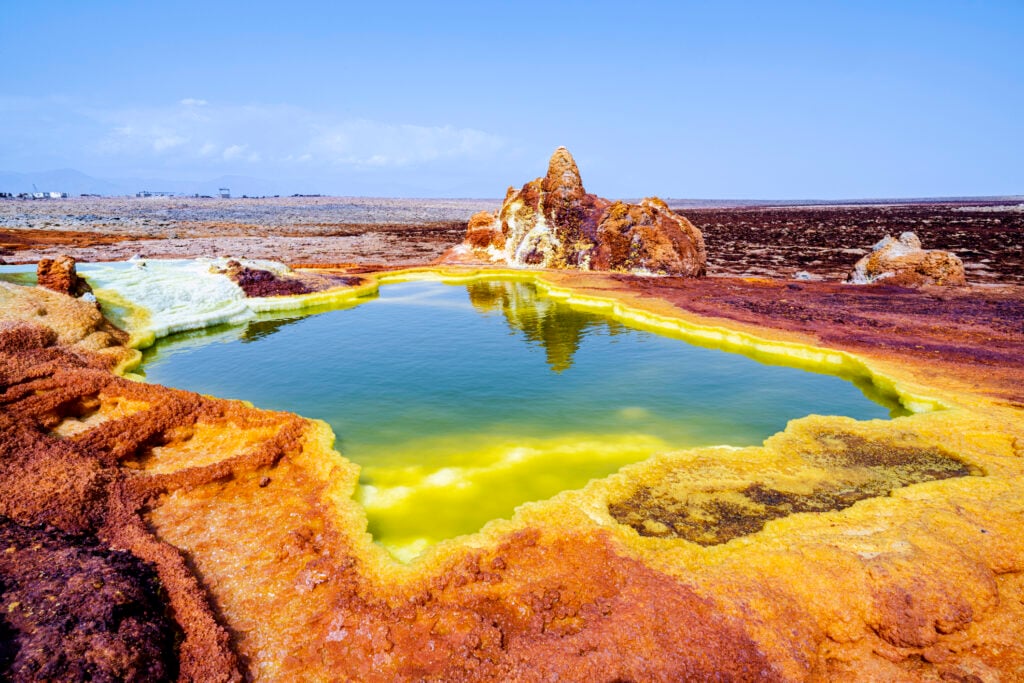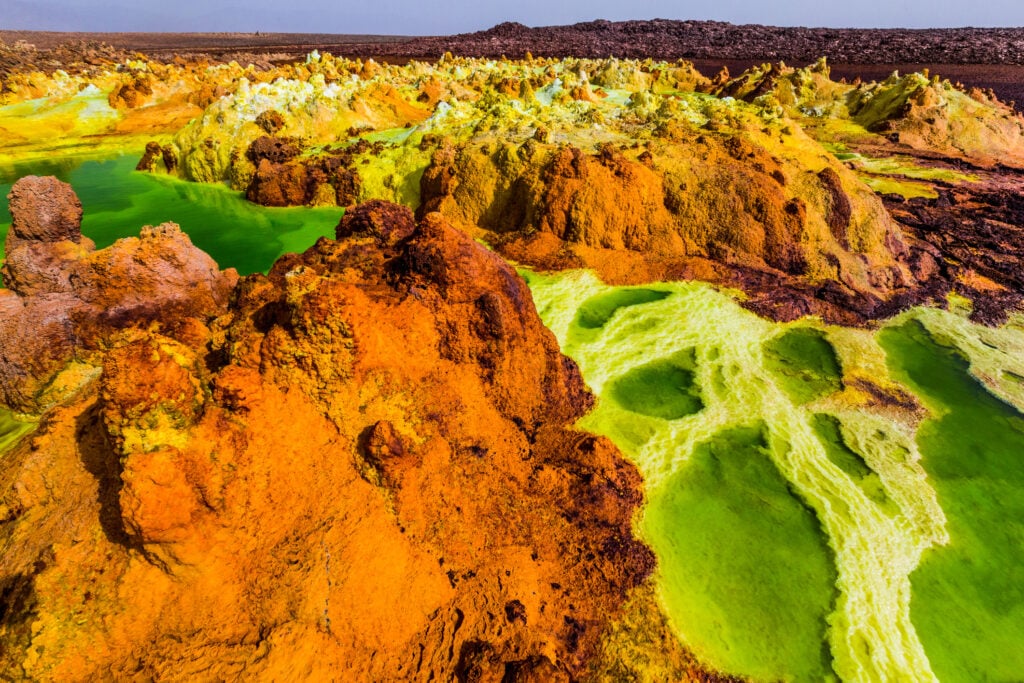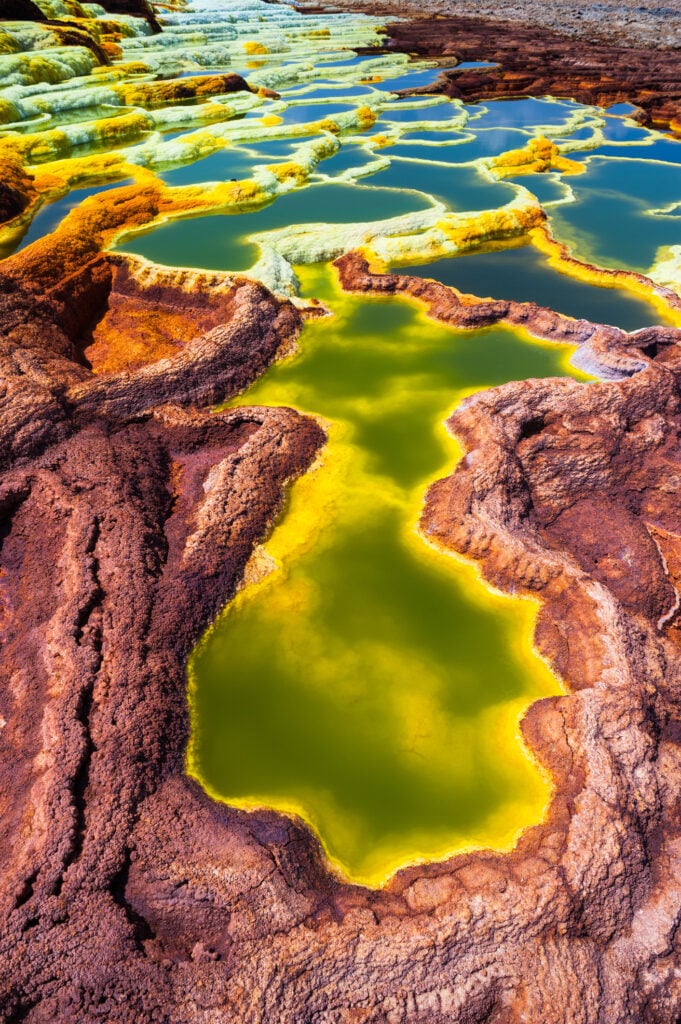The terrain looks like something from a faraway universe, but is actually the hottest place on our own planet. Home to acidic springs, salt and lava lakes, and set on volcanic ground, this is known as the Danakil Depression.
Located in the Horn of Africa, 350 feet below sea level, little was known about the alien location until scientific activity ramped up in the last decade. Among the discoveries in this most inhospitable of environments is the existence of natural life.

The geological depression is a result of continental drift. The Danakil Depression itself sits on an area above three tectonic plates, currently being torn apart and creating new land. This is called the East African Rift System and is the hottest average place on Earth.
Its vibrant colors are a result of numerous geographic factors. The rain and seawater, coming from the nearby coast, are warmed by magma and evaporate. The salt from the seawater causes a chemical reaction with the volcanic minerals, and creates the distinctive, almost neon color palette. The hottest part of the depression is the acidic pools, bright yellow in color, while the cooler pools are turquoise.
Arrid, unparalleled heat makes it incredibly difficult for life to survive in the Danakil Depression, although microbes have found a way. This was confirmed in 2017, through a study conducted by Barbara Cavalazzi for the University of Bologna, the oldest university in the world.

They successfully extracted DNA from bacteria discovered in Danakil, and found they were ‘polyextremophiles’. This means they have adapted to survive in not just the high temperatures, but in extreme acidity that kills almost all other forms of life. The breakthrough was the first evidence of microbial life in Danakil’s acidic pools. Danakil’s waters have an average pH of 0.2, which is one of the highest measurements of any natural setting on Earth.
Although the average is 0.2, the scientists found life in a pool where the acidity was measured as zero pH. This makes it the most acidic place where life has been found.
One of the biggest challenges for Cavalazzi and her team was the practical side of working in such extreme conditions. “On average, the temperature over there around lunchtime can reach 118F (48C),” she told the BBC. “One time we measured 131F (55C).” The geothermal activity underground increases the water heat even further, with the surface temperature approaching boiling point.
As well as the heat, scientists have to combat toxic hydrogen sulfide gas and chlorine vapor in the air. It means that they have to wear gas masks when working in the Danakil Depression for a prolonged period of time.

“When walking on the geothermal area you must be careful, as the salt crust is extremely delicate and fragile so you must be careful not to step on it. If you fell into 100C hot and extremely acidic water it would be a big problem, as the closest hospital is in Mek’ele, which is many hours away from the Dallol crater. When I go to the region I always take an Afar guide, as they know exactly where to go and where to step,” Cavalazzi explained.
The Danakil Depression itself is in Ethiopia, near the border with neighboring Eritrea, but is part of the broader Afar Triangle depression. It is approximately 124 by 31 miles in size, bordering the Ethiopian Plateau and Danakil Alps.
Although Afar people have settled in the nearby village of Hamadela, the region itself is uninhabited. Despite this, it was the site of the discovery of one of the earliest ancestors of modern humans. In 1974, researchers discovered the remains of ‘Lucy’, now on display in the National Museum in Addis Ababa. Lucy dates back 3.2 million years.





